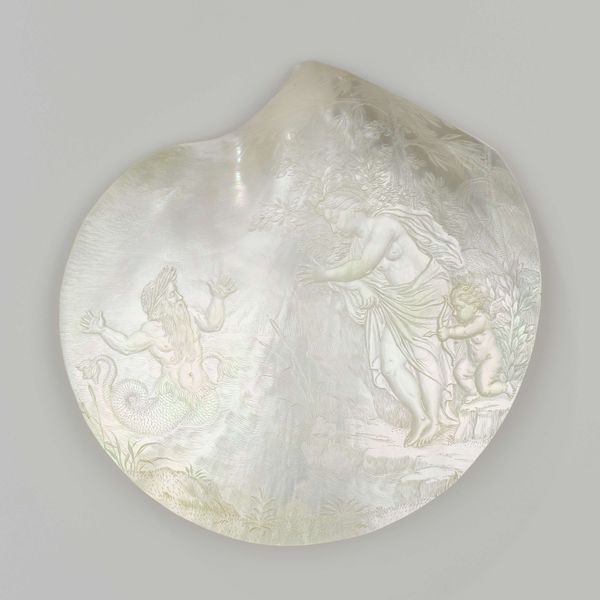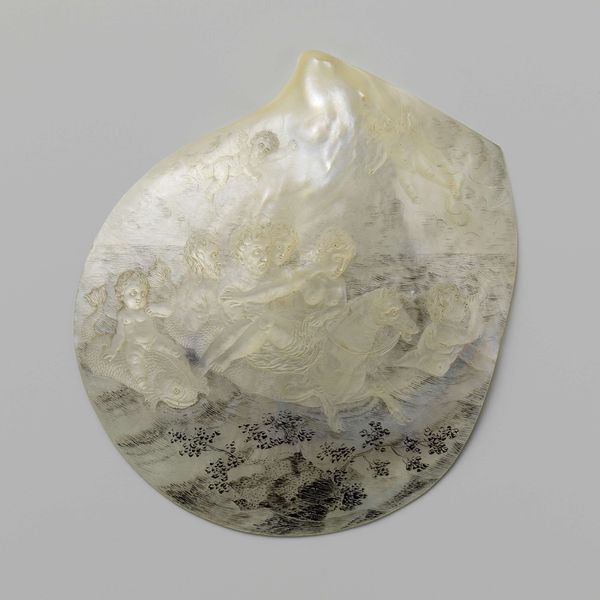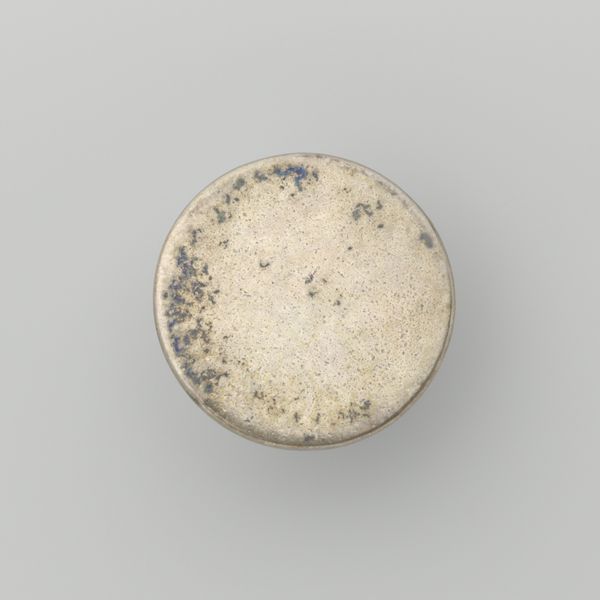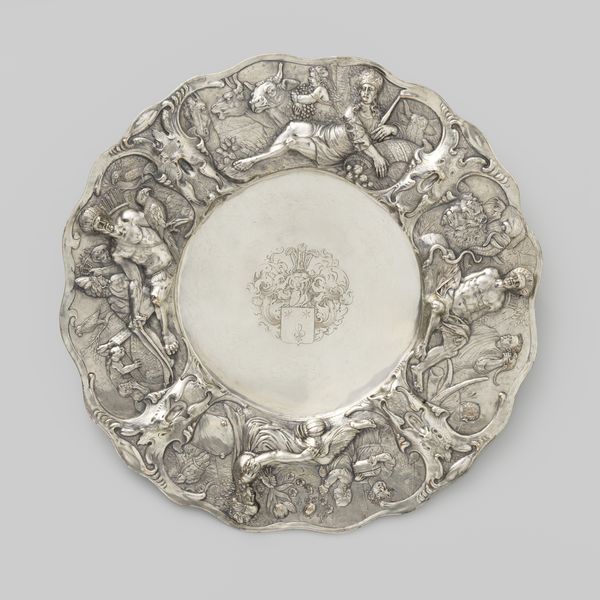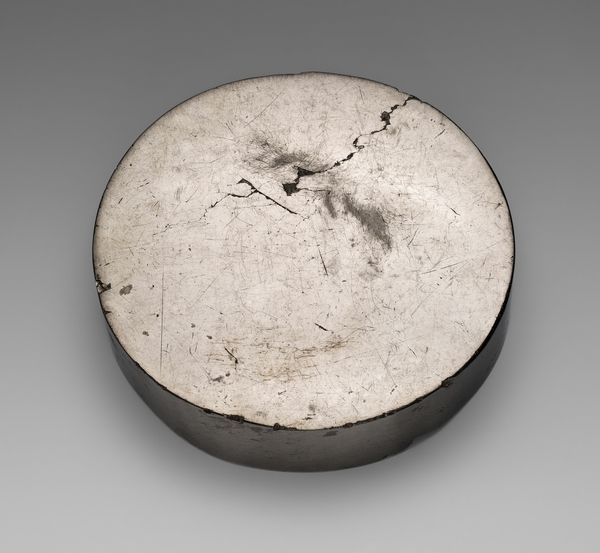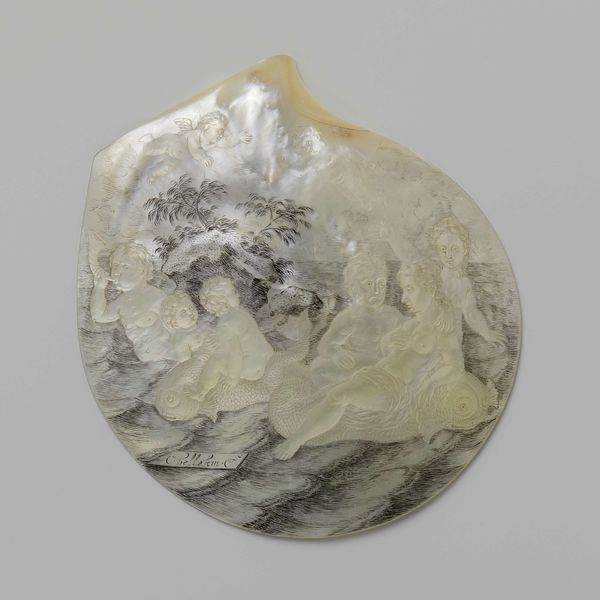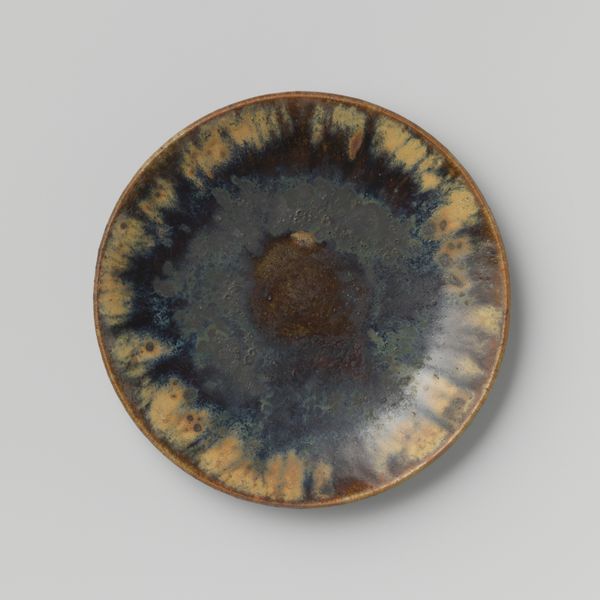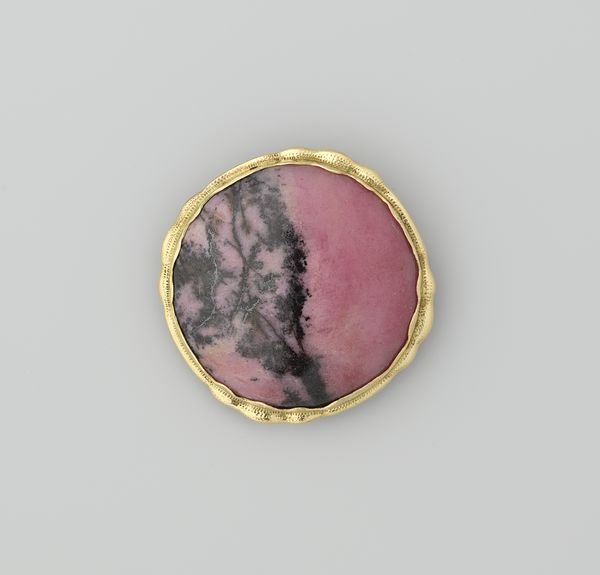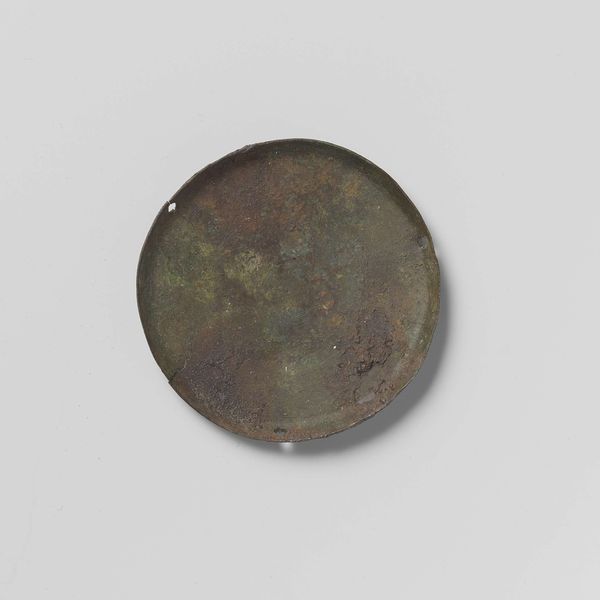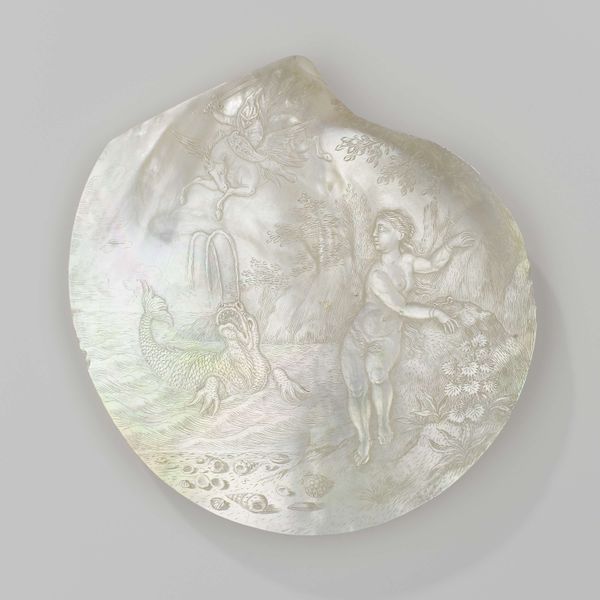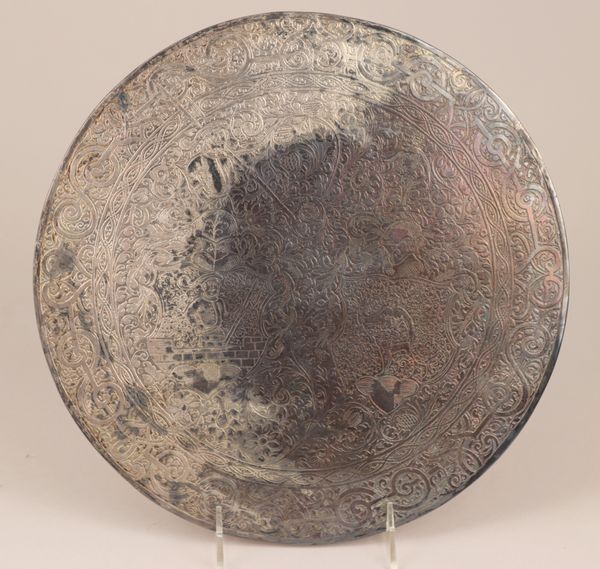
carving, sculpture, ivory
#
carving
#
narrative-art
#
baroque
#
sculpture
#
figuration
#
sculpture
#
ceramic
#
line
#
genre-painting
#
ivory
Dimensions: height 10.4 cm, width 8.2 cm, depth 1.4 cm
Copyright: Rijks Museum: Open Domain
Curator: Welcome. Before us, we have a remarkable Plaquette van oesterschelp, or Oyster Shell Plaque. It's a 17th-century carving, possibly by J. Bellekin. What do you make of it initially? Editor: There’s an ethereal quality. The pearlized shell acts almost as a stage for a hushed, perhaps forbidden, scene rendered in austere monochromatic lines. Curator: Indeed. Look closely at the line work, the baroque influence. There's a dramatic quality to how the figures are rendered in a relief, wouldn't you say? Observe the implied movement and use of light and shadow on the figures. Editor: And who are these figures? Are they part of some mythological retelling or biblical parable appropriated and rendered within a secular and likely bourgeois domestic context? It evokes, to me, notions of power, class, and gender relations as the viewer's subjectivity becomes implicated. Curator: That is an interesting reading. However, let's think about the object itself. An oyster shell is not merely a support, its inherent nacre imbues the scene with an otherworldly glow, no? Its physical contours determine the limits of the artistic field. Editor: I agree. I wonder about this contrast – a ‘natural’ object appropriated toward the very constructed nature of elite visual culture during this era. To take something organic and imbue it with this very deliberate narrative seems to reinforce humanity's supposed dominion, if not active refashioning, over the natural world. Curator: Well observed! It is genre painting. Though petite in scale, it presents grand ideas of allegories – perhaps even a classical myth reworked. Note how the line carving itself is quite assured in the figure and detail. Editor: Yes, a re-imagining, or perhaps even a subversion of grand historical or mythological narratives, tailored for a specific audience. Whose gaze were these eroticized depictions made for, and what does that tell us about the assumed (gendered) viewers in a domestic context? Curator: Food for thought, certainly. Regardless, as an artwork, the oyster shell becomes a canvas, transforming into an opulent tableau vivant – the detail within those constraints truly is captivating! Editor: Absolutely. Looking at it this way helps expose the intersection of craft, culture, and class interests inherent within this type of intimate object making it far from 'silent' even after all these centuries.
Comments
No comments
Be the first to comment and join the conversation on the ultimate creative platform.
